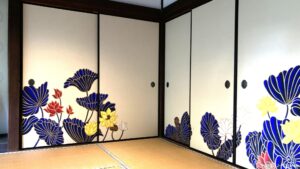Asukadera, the First Full-scale Buddhist Temple in Japan
Asukadera Temple was the first full-scale Buddhist temple in Japan, spending approximately 200m from east to west and 300m from north to south. It was built in the capital province of Asuka in 596, using various advanced technologies in architecture, geology, and painting. In the face of the threat of falling into the tributary nation controlled by a powerful neighboring nation, who built the Asukadera Temple, and for what purpose? To promote the establishment of an independent government, Reigning Empress Suiko, Minister Soga Umako, and Prince Umayado vigorously supported the establishment of the Asukadera Temple Complex as an important symbol of their cause.
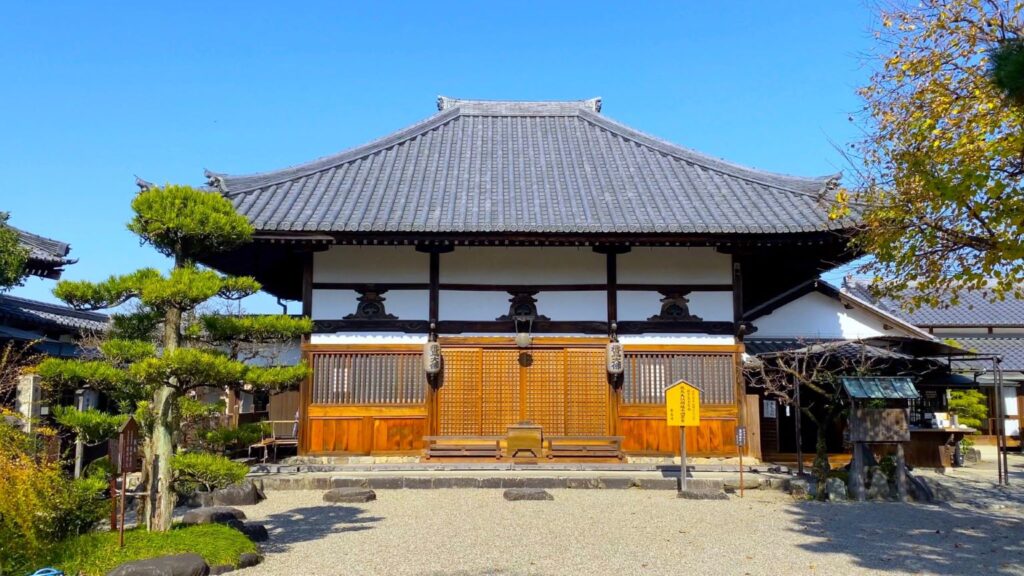
The Gentle Gaze of the Oldest Asuka Great Buddha
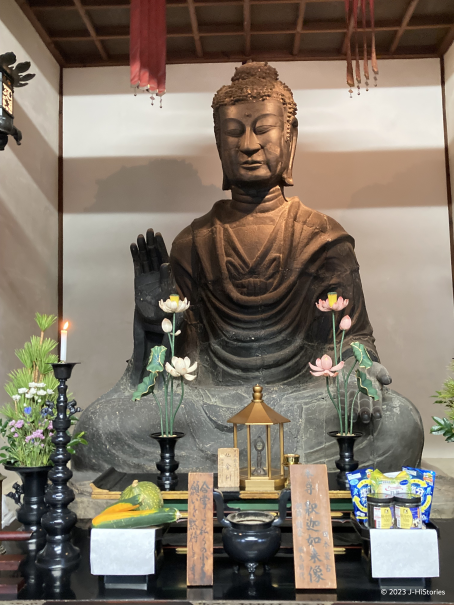
The seated Asuka Daibutsu (Asuka Great Buddha), standing at 275.2 cm tall, has quietly watched us from the same spot for over 1,400 years, despite enduring many hardships such as when its halo was burnt away twice. The tribulation can be seen on its patched face. Its eyes are gentle, and its left palm faces upwards in a gesture of compassionate love to signify acceptance of everything as it is.
A Golden Deity Came to Japan from the Korean Peninsula
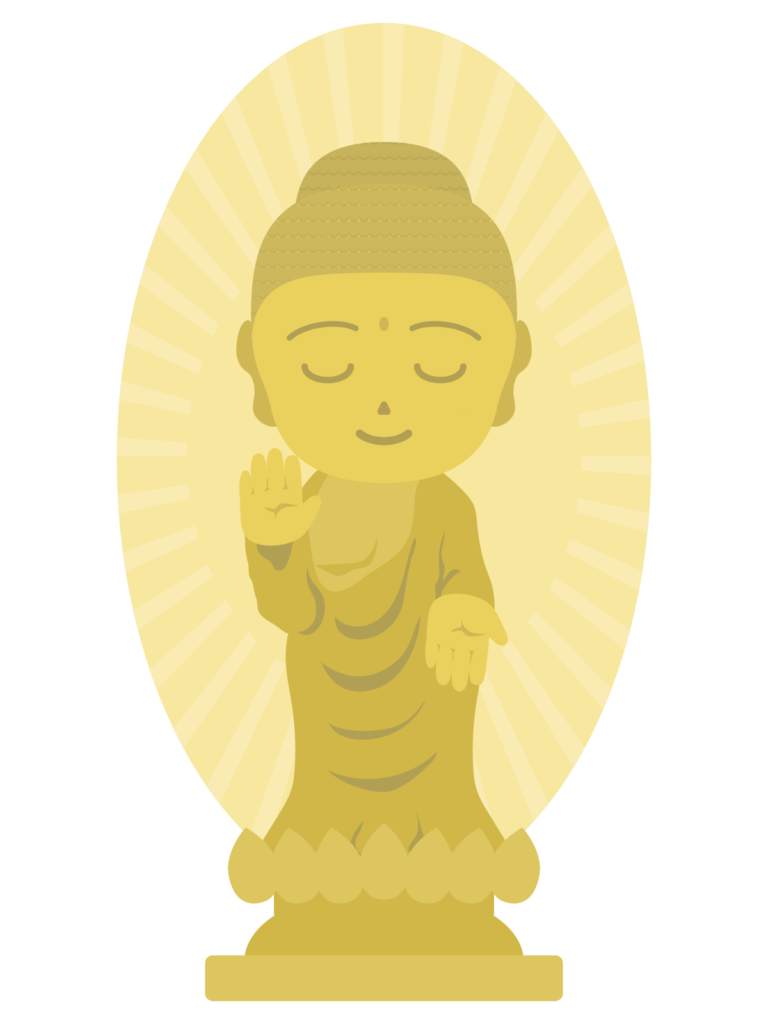
From the 6th to the mid-7th century, Japan was plagued by fierce battles among the three countries in the Korean peninsula, Baekje, Koguryo, and Silla. Many people fled to Japan, bringing with them advanced production and civil engineering technologies, the Ritsuryo legal code system, and Buddhism. In 538 (or in 552), King Seong of Baekje presented a shiny gilt Buddha statue to the 29th Emperor Kinmei (509-571; 欽明天皇) as a gesture of goodwill, aimed at forging a cordial relationship with Japan and warding off the threat posed by neighboring countries Koguryo and Silla. This marked the first official introduction of Buddhism to Japan. For Emperor Kinmei and the Imperial Nobles, it was recognized as a Baishin (a deity similar to Japanese Shinto deities), as opposed to a Buddhist statue.
The Political Struggle between the Mononobe and Soga Clans
The powerful Mononobe and Nakatomi tribes presided over primitive Shinto rituals, which were inherited over generations. Believing that accepting Buddhism would provoke the wrath of the Japanese deities, they opposed its acceptance. In contrast, the Soga clan aggressively embraced Buddhism to acquire advanced technologies and knowledge. This led to a power struggle, but the situation was not that simple. Many people came to Japan from the Korean peninsula and the outbreak of epidemics affected both the anti-Buddhist Mononobe clan and the pro-Buddhist Soga clan. Emperor Kinmei faced the necessity to calm the multitudinous national deities, as the plague was considered their Tatari (curse). To appease the Tatari of Baishin, Emperor Kinmei ordered the Soga clan, instead of the Mononobe clan, to perform the necessary rituals. In ancient times, ritual power was equivalent to political power itself. Therefore, the appointment of the Soga clan caused a political power struggle. The Monobe clan was outnumbered in this struggle, and launched countermeasures but failed at every turn, forcing their exit from the political stage. The victorious Soga clan built the Asukadera Temple Complex and promoted building the Ritsuryo state, which placed Buddhism at its center.
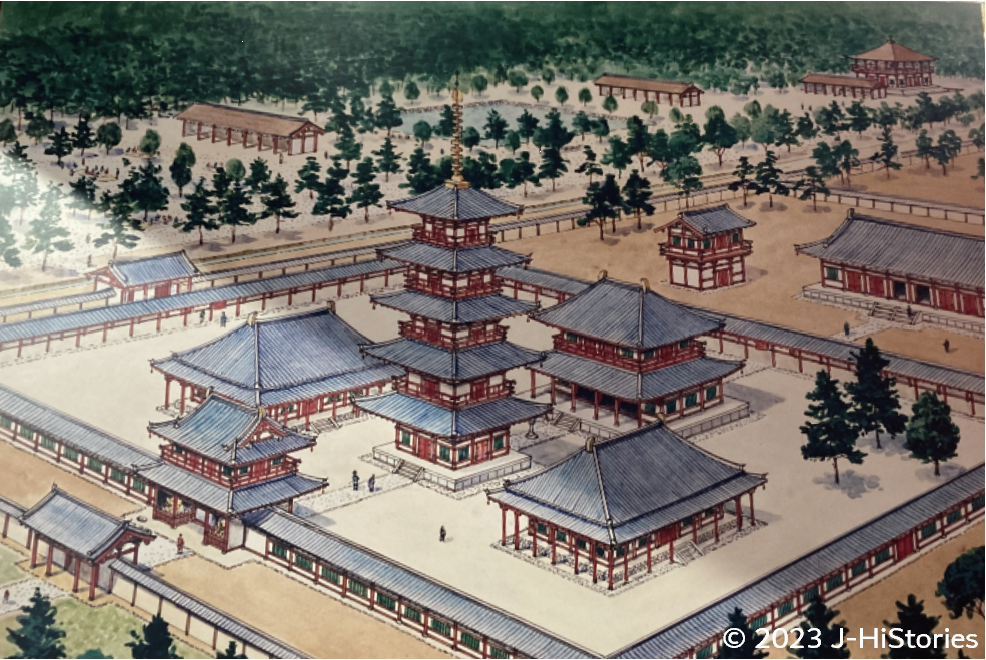
Asukadera, An Icon to Demonstrate the Advanced Nation
Japan began its long journey as an independent nation not becoming a tributary nation of the Sui dynasty since the arrival of the shiny gilt Buddha statue. To achieve this, Reigning Empress Suiko (554-628, 推古天皇), Minister Soga Umako (551-626, 蘇我馬子), and Prince Umayado (574-622, 厩戸皇子), known as Prince Shotoku, had to work together to adopt advanced technologies and political systems. Additionally, it was important to visibly demonstrate that Japan was an "advanced nation". Therefore, the Asukadera Temple Complex became an essential icon with its spectacularly large, state-of-the-art, full-scale temple complex, especially during the Asuka era (592-710). After that, once another temple, Horyuji, was built in 607, the long-awaited second envoy was despatched to the Sui dynasty.
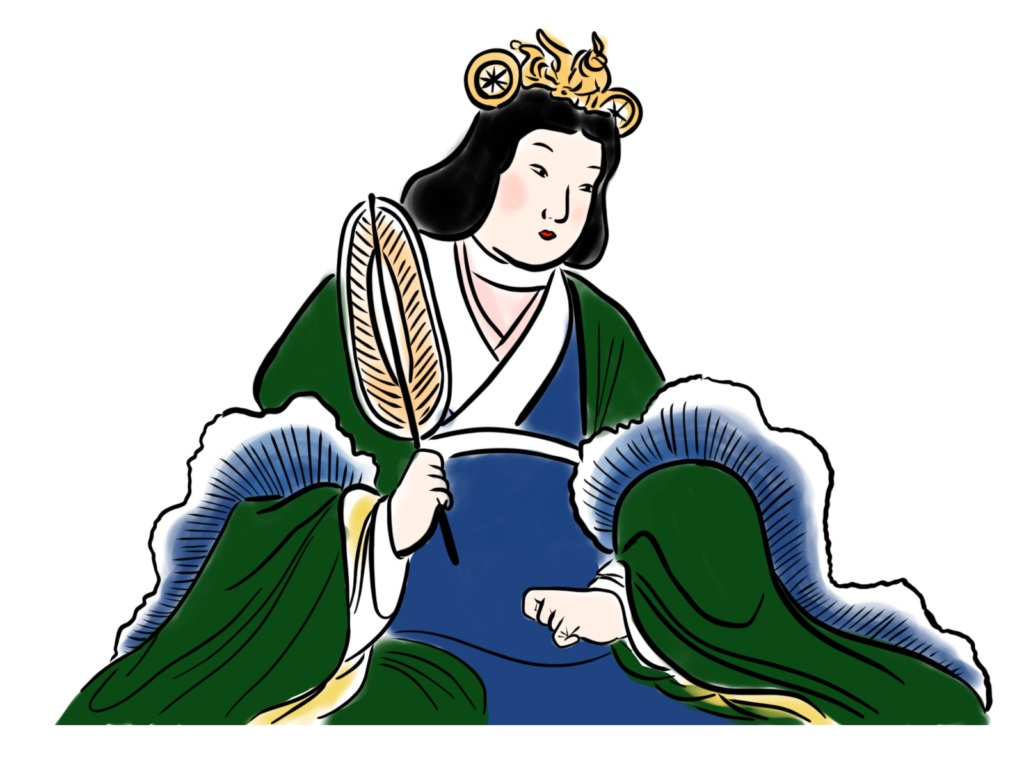
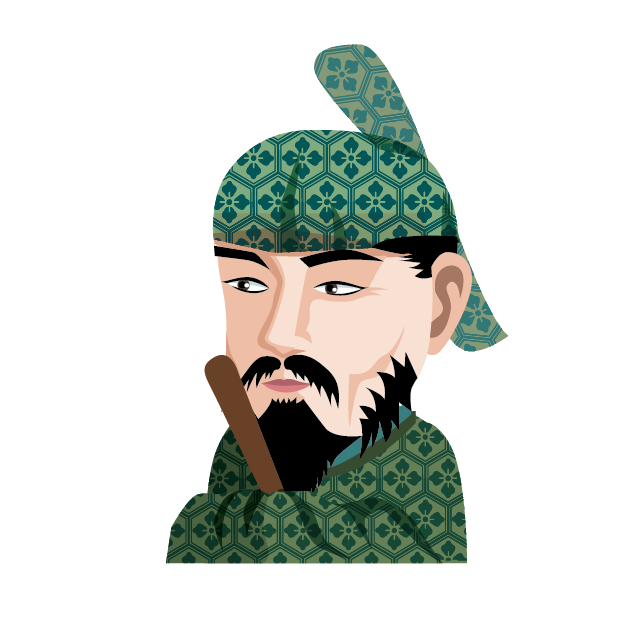
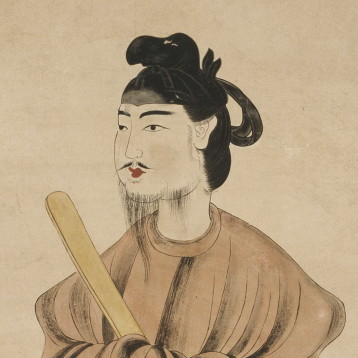
(Source: Colbase)
Soga Clan Fell in the Greatest Coup d'etat and Asukadera was Divided into Two
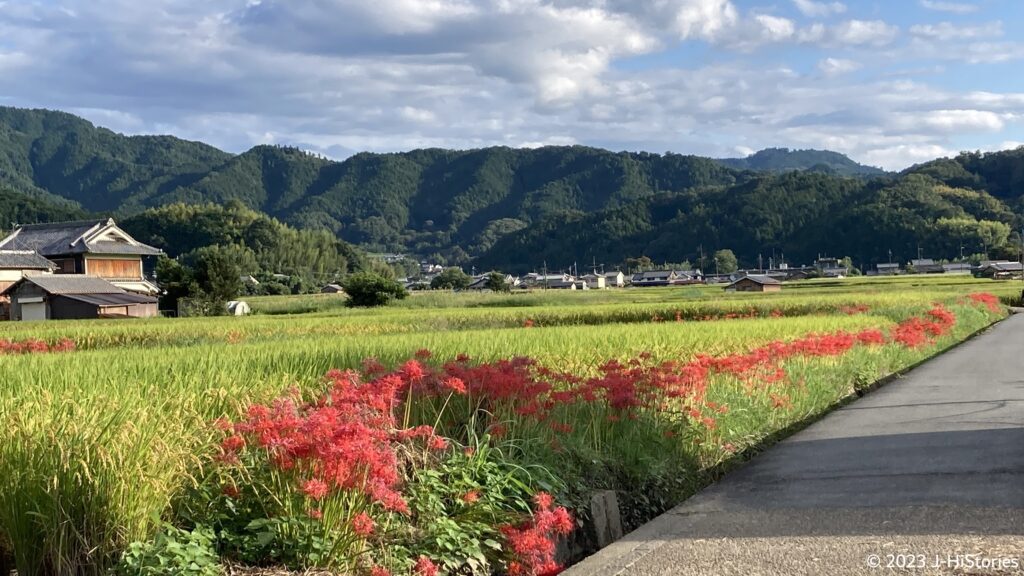
Soga Umako is buried in the largest rectangle-shaped Ishibutai tumulus in Japan, south of the Asukadera Temple. Later, Umako's grandson, Iruka was assassinated by Prince Naka-no-Oe (626-672, later, the 38th Emperor Tenji), which led to the downfall of the head family of the Soga clan in 645. It was the largest coup in ancient times (Isshi Incident). As the Soga clan lost power, the Asukadera Temple also lost its influence. The temple was divided into two once the capital was moved to Heijo-Kyo in Nara in 710. One remaining temple in Asuka is currently known as the Asukadera Temple, and the other was moved to Heijo-Kyo and renamed Gangoji Temple (a World Heritage of Nara and a National Treasure). You can visit the Asukadera Temple and see the seated Asuka Daibutsu (Asuka Great Buddha) while reflecting on the great achievements of Soga Umako, Reigning Empress Suiko, and Prince Umayado in establishing the first step towards an independent nation utilizing Buddhism. You may also appreciate their hardships from the patchy face of the statue. The rolling hills, sparkling rivers, and idyllic scenery of Asuka Village are a feast for the eyes. Its rich history began in Japan's first capital. The Buddha statue presented by Baekje is now enshrined at Nagano Zenkoji Temple after several strange fates.
Suiko, Umako, and Uyamado Timeline
| 538 | Official introduction of Buddhism from Baekje | Kofun |
| 572 | Soga Umako became a minister. | |
| 587 | Soga Umako defeated Mononobe Moriya | |
| 589 | Sui Dynasty unified China | |
| 593 | Reigning Empress Suiko ascended throne | Asuka |
| 593 | Prince Umayato became a regent to Reigning Empress Suiko | |
| 596 | Constraction of Asukadera Temple started | |
| 600 | The first envoy to Sui Daynasty | |
| 603 | Established a system of "Twelve Ranks of the Crown" | |
| 604 | Established "Seventeen-Article Constitution" | |
| 606 | Asukadera Temple was established | |
| 607 | The second envoy to Sui Daynasty | |
| 608 | Sui's envoy, Hai Seisei, came to Japan | |
| 622 | Prince Umayato passed away | |
| 626 | Soga Umako passed away | |
| 628 | Reigning Empress Suiko passed away | |
| 645 | Iruka was assassinated by Prince Naka-no-Oe (Isshi Incident) | |
| 710 | Relocation of the capital to Heijo-kyo in Nara from Asuka | Nara |
Recommendations to visit
- Access: 1 hour from Kintetsu Nara Station to Kashihara Jingu-mae Station (need to transfer the train at Saidaiji Station). Take the ”Asuka Tour Bus” at Kashihara Jingu-mae Station East Exit. Got off at "The Asukadaibutsu(飛鳥大仏)" bus stop, the fifth bus stop from Kashihara Jingu-mae Station. Then a 3-minute walk.


